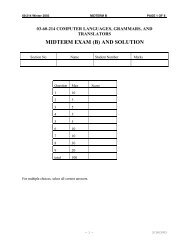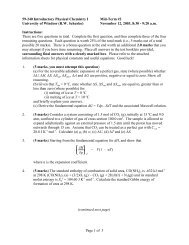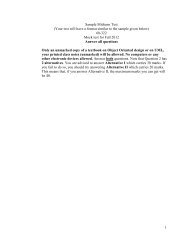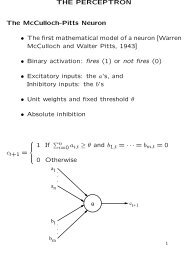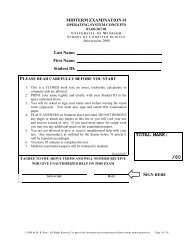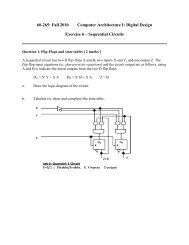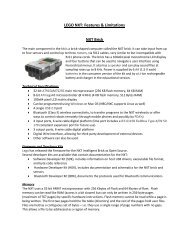Adjectives: A Uniform Semantic Approach - University of Windsor
Adjectives: A Uniform Semantic Approach - University of Windsor
Adjectives: A Uniform Semantic Approach - University of Windsor
You also want an ePaper? Increase the reach of your titles
YUMPU automatically turns print PDFs into web optimized ePapers that Google loves.
334 N. Abdullah and R.A. Frost<br />
3 Our <strong>Approach</strong><br />
Some authors (e.g. Strawson, see [2], and Jespersen, see [15]) argue that common<br />
nouns and adjectives are ontologically different. We believe that representing<br />
common nouns on a par with adjectives is “forcing” a behaviour on adjectives that is<br />
not in their nature. This behaviour manifests itself in the intersection failure <strong>of</strong> sets<br />
representing adjectives and sets representing common nouns, which leads to the<br />
conclusion that adjectives must be <strong>of</strong> complex nature.<br />
We argue that it is possible to represent all adjectives as sets, and yet capture their<br />
idiosyncrasies. This can be done by considering sets representing adjectives as having<br />
typed objects as their members. A schema for an adjective-representing set may look<br />
like the following:<br />
Set_name ={member: type1}: type2<br />
(1)<br />
where type1 is a non-property type and type2 a property type<br />
For example, clever pet, clever man, and clever police dog in the sentences John is<br />
a clever man, Fido is a clever pet, and Fido is a clever police dog can be represented<br />
as follows:<br />
Clever={j: human, f: pet, f: policedog}: clever<br />
where j =|| John|| 5 , and || f = Fido||<br />
This representation <strong>of</strong> the adjective ‘clever’ captures the intuition that although j<br />
and f are members <strong>of</strong> the set Clever, both are clever in their own way. John is clever<br />
as a man 6 while Fido is clever as a dog. What they have in common is “cleverness”.<br />
This is reflected by ascribing the type “clever” to the set containing them.<br />
This representation <strong>of</strong> adjectives makes it possible for an object to have more than<br />
one occurrence in adjective-representing sets, as done with “f: pet” and “f: policedog”<br />
in the set Clever.<br />
Common nouns may have the following representation schema:<br />
Set_name ={member: type}: type<br />
(2)<br />
where type is a non-property type<br />
The representation <strong>of</strong> (2) is different from that <strong>of</strong> (1) in that the members’ type is<br />
the same as the set’s type. The representation <strong>of</strong> (2) serves two purposes: 1) it makes<br />
the internal structure <strong>of</strong> common nouns similar to that <strong>of</strong> adjectives (i.e. “member:<br />
type” pattern); and, 2) it eliminates the co-extension problem. Regarding the latter<br />
point, if for example, as is the case in the actual world, the set <strong>of</strong> cordate contains the<br />
same elements as those in the set <strong>of</strong> renate (see, definition <strong>of</strong> set equality, below) the<br />
two sets are not equal. Hence, they do not mean the same thing.<br />
3.1 Equality in Typed Sets<br />
Since sets now contain typed elements, set operations must take the type <strong>of</strong> set<br />
members into consideration. This can easily be accommodated as follows:<br />
5<br />
The symbols “|| ||” represent the interpretation function.<br />
6<br />
The correct type for the intersective reading for ‘clever’ is “T”, as explained in the next<br />
section.







